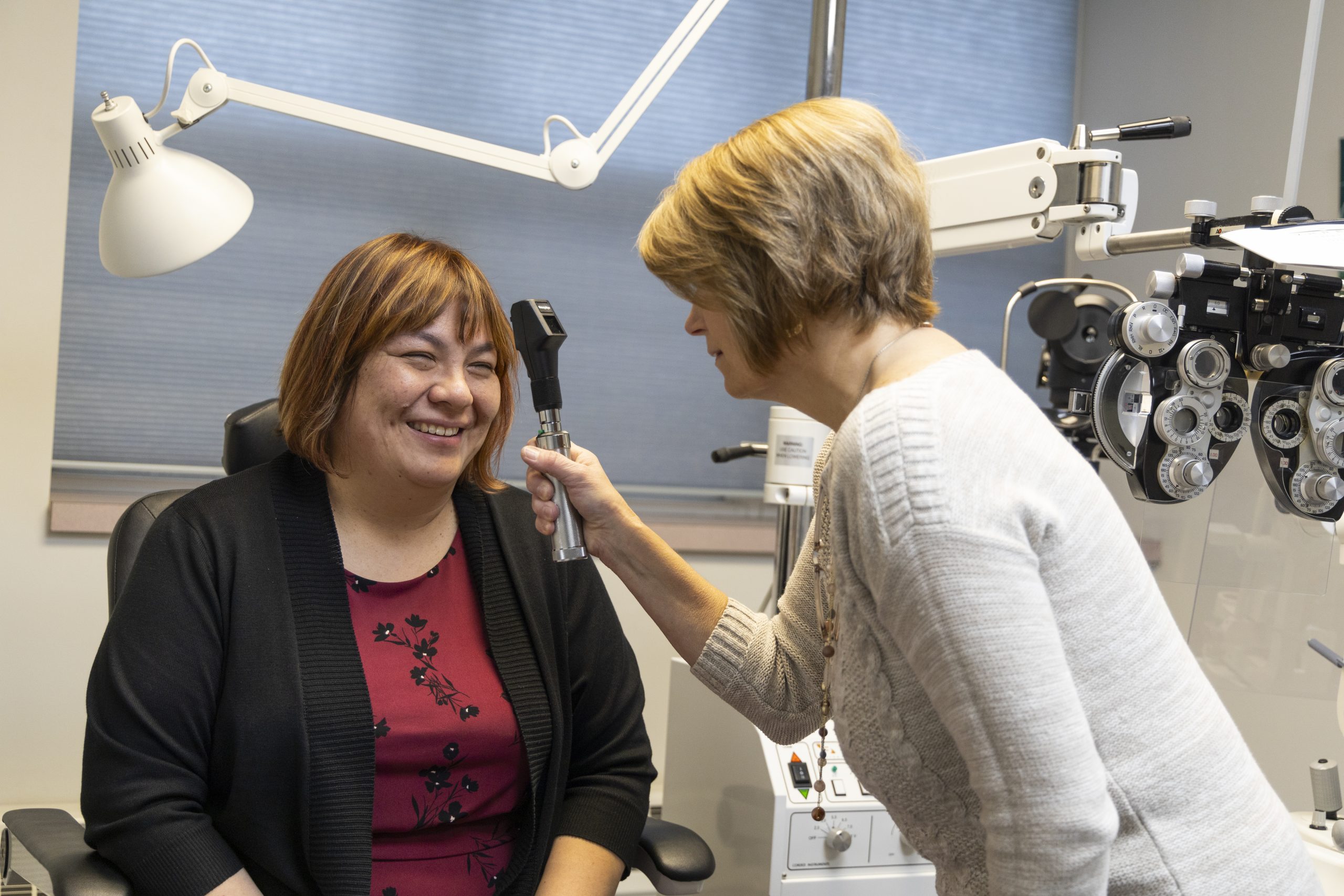Nearly 14 million Americans have low vision, a condition characterized by visual acuity of 20/70 or poorer in the better-seeing eye and cannot be corrected or improved with regular eyeglasses, contact lenses, medication or surgery. Some of the most common causes are age-related macular degeneration, glaucoma, diabetic retinopathy, and cataracts. However, other problems such as brain injury, genetic disorders, albinism, complications from systemic conditions and trauma can also cause low vision. Low vision can impact an individual’s central or peripheral vision, cause blurry and hazy vision and/or cause night blindness.
Vision Loss and Quality of Life
Vision loss can affect one’s physical health by increasing their risk of falls. It can often affect an individual’s quality of life by impacting their functioning and ability to perform everyday tasks with ease. It can have a big impact on an individual’s mental health. Depression is common in people with vision loss. Loss of vision has been linked to loneliness, social isolation and feelings of worry, anxiety and fear. Vision loss can impact employment and educational attainment.
Low Vision Exams
The low vision exam is centered around the individual’s functional abilities. A low vision exam is provided by a doctor who has received specialty training in low vision rehabilitation. A low vision optometrist is trained to understand the unique needs and challenges of each patient. They will determine the level of vision loss, assess remaining vision and work with the individual to maximize their eyesight with adaptive equipment and training. The low vision specialist works with a team of individuals who work together to help an individual reach their goals.
Signs of Low Vision
You may have low vision if you cannot see well enough to do things like read, write, drive, recognize people’s faces, tell colors apart, see your television clearly, identify your medication or dosage instructions, identify and organize household items, tell time or use your keyboard or computer.
What does it mean to be legally blind?
Most government agencies and healthcare institutions agree that legal blindness is defined as a visual acuity (central vision) of 20/200 or worse in the best-seeing eye or a visual field (peripheral vision) that is limited to only 20 degrees. Visual acuity of 20/200 means that what the legally blind person can see at 20 feet, the average person can see clearly at 200 feet. As for the visual field, the average person can see 140 degrees without turning his head. Whereas total blindness, a form of legal blindness, is a complete lack of light perception and form perception. If you are determined to be legally blind you may be eligible for a free low vision examination, equipment and/or training through a New York State Funded Program.
Who should come for a low vision exam?
Anyone with vision worse than 20/40 in the better-seeing eye or anyone who feels their level of vision negatively impacts their activities of daily living.
What is the goal of the low vision exam?
The goal of the low vision exam is to maximize an individual’s visual ability with compensatory strategies. It does not restore an individual’s visual acuity or ocular functioning. It is not a substitute for medical eye care. An ophthalmologist should continue to monitor and treat the health of one’s eyes. Low vision is a rehabilitation approach to enhance independence and quality of life.
What should you bring to your low vision exam?
You will need to bring your current eyeglasses/sunglasses (even if you are not currently wearing them), any magnifiers or handheld visual aids you may be using, and material you would like to read or see. You will also need to bring all insurance cards and paperwork that has been mailed or downloaded from our website, including a complete list of your current medications, supplements and over-the-counter medications. Please bring a list of questions or concerns you may have as well as an idea of what you hope to accomplish from the exam. You may also be asked to get a copy of your exam records from all of your current eye doctors that can be brought with you or sent to our office. All copayments are expected to be paid on the day of your appointment.
We appreciate your cooperation in keeping your appointment and arriving on time. If you must cancel your appointment, we ask that you please provide at least 24 hours for all cancellation notifications by calling 518-463-1211 extension 241. If an appointment is canceled with less than 24 hours notification, a $25 fee may be incurred. New patient appointments may take up to two hours and the information conveyed in that time can be extensive. We encourage all patients to bring a companion to aid in understanding your vision loss and recommended treatment strategies.
If you or someone you know is experiencing changes in their vision and/or would like to learn more about the services NABA has to offer, including low vision, please call us at 518-463-1211.
What To Bring:


